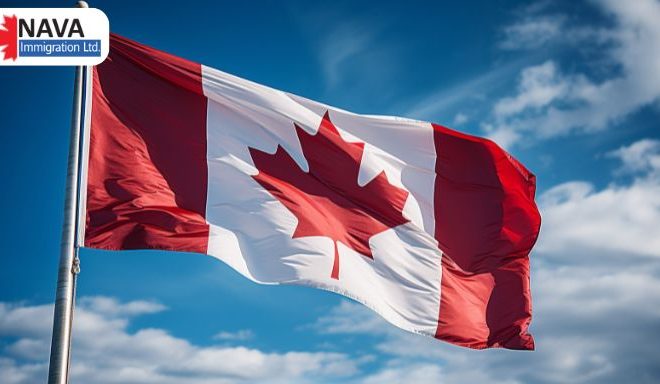Intellectual Property Law in Canada: What Entrepreneurs Should Know
If you are an entrepreneur willing to move to Canada to initiate a business, you should acquaint yourself with the intellectual property law in Canada. This will help you protect your business and intellectual assets, including your inventions, new brands, new technologies, novel designs, original software, unique processes, etc., and allow you to run your business successfully.
According to the Government of Canada’s website, for businesses to run, business owners need to operate their intellectual assets wisely, and protecting them can provide a competitive benefit to businesses.
In Canada, you can use various ways to protect your intellectual property, such as by applying for a patent, a trademark, or copyright registration.
Understanding a patent, a trademark, or a copyright: How you can apply?
Let’s explore what a patent, a trademark, or a copyright means in Canada and the process of submitting an application for each in detail.
Patents
A patent is a right provided by the government of Canada to the investor which can prevent other individuals from making, using, or selling an invention. This applies from the day when the government authorizes the patent. Typically, the patent is valid for 20 years from the day the investor applied for it.
A Canadian patent provides rights that are valid throughout Canada but not outside it. Likewise, patents from other countries do not apply to Canada and cannot prevent inventions within Canada.
A person who has applied first for a patent for an invention is granted the patent. This illustrates that if two people are willing to obtain a patent for a specific thing, the patent is awarded to the person who first files for it.
To be eligible for a patent, an invention must be:
- New and first in the world
- Useful, functional, and operative
- Innovative – demonstrating creativity that is not obvious to individuals in the same field with average skill
In addition, the invention must also be:
- A product
- A composition
- A machine
- A process
- An improvement in any of these
In Canada, if someone makes, uses, or sells a patented invention without the patent holder’s consent, it is termed patent infringement. If the patent holder feels that the patent has been infringed, he can sue the other person for damages.
It is not required by patent law that the products or articles be labeled ‘patented.’ However, after applying for a patent, you may label your invention as “Patent applied for” or “Patent pending.” Both phrases have no legal significance; however, they can signal to others that once the patent is authorized, you will have the exclusive patent right that will apply to your invention.
Trademarks
A trademark is an arrangement of letters, words, designs, or sounds that differentiate the goods and services of an organization from others in the market.
When you register a trademark in Canada, you acquire the absolute right to utilize it across Canada for a period of ten years. It’s notable that a trademark is renewable.
Over time, a trademark not only represents a company’s or person’s actual goods and services but also the owner’s reputation.
Typically, there are two kinds of trademarks: ordinary trademarks and certificate trademarks.
- An ordinary trademark includes words, designs, sounds, scents, tastes, textures, moving images, holograms, modes of packaging, 3D shapes, colors, or a blend of these that are employed to help stand out the goods and services of a person or company from others in the market.
- A Certificate mark, on the other hand, can be provided to multiple people or companies to demonstrate that certain goods and services satisfy a defined standard.
If you are willing to apply for a trademark, ensure that you look at the Canadian Trademarks Database to determine that your trademark is unique and can not be confused with other trademarks. If your trademark resembles another trademark, it can be a trademark infringement and lead to penalties.
Copyright
Copyright is the absolute right provided by the Canadian government to individuals to produce, reproduce, publish, or perform an original literary, musical, dramatic, or artistic work. Typically, the content creator is the copyright owner. However, an employer may be a copyright owner of the work done by the employees unless otherwise stated in an agreement.
If all the original creative works satisfy the conditions of the Copyright Act, Canadian laws protect them.
When you hold the copyright of your work, you will decide how others can use it. Also, individuals who desire to use the copyrighted work need to receive your permission.
Typically, when you create an original work, it is automatically protected by copyright. But, when you register a copyright for it, the Canadian Intellectual Property Office issues you a certificate that you can use as evidence of your ownership.
In Canada, copyright generally remains valid for your lifetime and for 70 years after you die. After the death of the content creator, the work is put into the public domain, and anyone can use it.
For more details on patents, trademarks, and copyright in Canada, you can refer to the Government of Canada’s site.
How can an entrepreneur immigrate to Canada?
There are various immigration options for immigrant entrepreneurs to enter Canada in order to establish and start a new business.
The Federal Start-Up Visa Program allows immigrant entrepreneurs to establish and grow their businesses in Canada.
Potential candidates are connected with privately owned Canadian organizations, which can guide and support them in establishing and operating a business in Canada.
Canada welcomes entrepreneurs with the capabilities to develop innovative businesses that are able to generate jobs in the market and compete globally.
There are various entrepreneur categories under the PNP offered by Canadian provinces to encourage immigrant entrepreneurs to enter and settle in a specific province. The province of Quebec offers the Quebec Entrepreneur category to target potential business owners and managers who can develop businesses based on the agricultural, commercial, or industrial sectors within the province.





